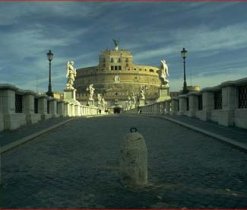The widest source of news concerning Hadrian's biography is supplied from Elio Spaziano, who in IV century a.C. wrote a collection of emperors' life. Therefore, we know that, risen to the maximum charge of the State, Hadrian, four years later the crowning, began personally to inspect provinces of the empire, making the longest travels that lasted also several years and carried him in the farest-off lands, consolidating the borders and rendering organic the legislative system. He stopped in Tivoli to rest, among travels, following the several factories.

Publio Elio Adriano
He was a man who loved peace and wise observer of circumstances. In Egypt he built Antinopolis, city on the Nilo Antinopolis, one city attested on the Nilo and connected ancient ways to carovaniere river and connected by ancient caravan-way to the markets of the Red Mar. The legend wants that here died the young and beautiful Antinoo, his preferred and faithful companion, in honor of which and to his everlasting memory he dedicated the city.
We have news on this very beautiful young man, Hadrian's favorite with Lucio Ceionio Comodo Vero, from the already cited Spaziano: he would be been born around the 110 d.C. to Bidynium/Claudiopolis in Asia Minor and met the emperor between the 123 and the 125 during the first travel of the monarch in the East. The emperor became infatuated with him so much that said special concessions to the Bitinia (of which the young man was native) promoting this district even to imperial province.
Officially
Antinoo died tragically falling in the Nilo at Besa, on the
right side of the river, in the face of the city of Hermopolis,
but there are other versions: suicide or, for someone, homicide.
Hadrian, saddened, deified him: this action provoked clamour
because this honour was only reserved to the members of
the imperial family. Also he numbered him among the Pantheon's
divinities and he dedicated to him the cited city of Antinoopolis.
To this young man many artists have dedicated sculptural
works, that portray Antinoo's features.
Among the Hadrian's great building activities in Rome we remember: the remaking of Pantheon, destroyed from a fire; the beginning of the construction of the Tempio di Venere in Rome and the greatest work, for wealth and architectonic fantasy, that is the Villa near Tivoli, where the emperor passed the last years of his reign, dedicating his time to meet philosophers and intellectuals, entertaining them with hospitality and disputing with them of several arguments. He dedicated himself, while still alive, to the construction of his own tomb (the gigantic mausoleo that today is called Castel Sant'Angelo), placing it on the right side of the Tevere, connected with an appropriate bridge (Helium) in order to catch up.
Surroundings
-
The Sacro Speco

An impressive complex of buildings which almost looks as if it is one with the surrounding rock...
To know more
-
Rocca Pia
Built on the place where Callisto II Borgia's Castle was situated...
-
Church of St.Peter
It was built on the rests of a roman villa...
Tivoli's attractions

Patrocinio Comune di Tivoli
Assessorato al Turismo



